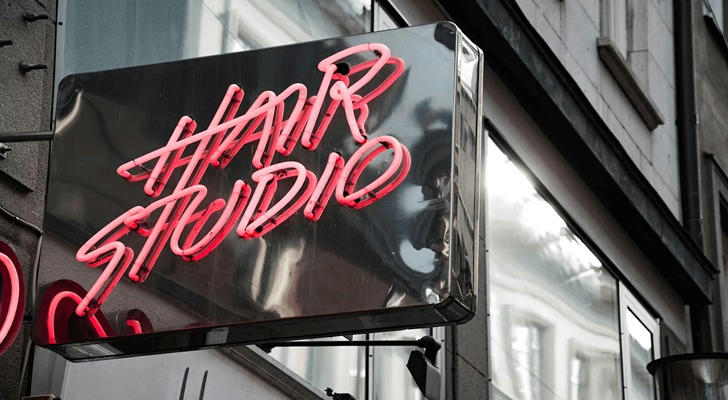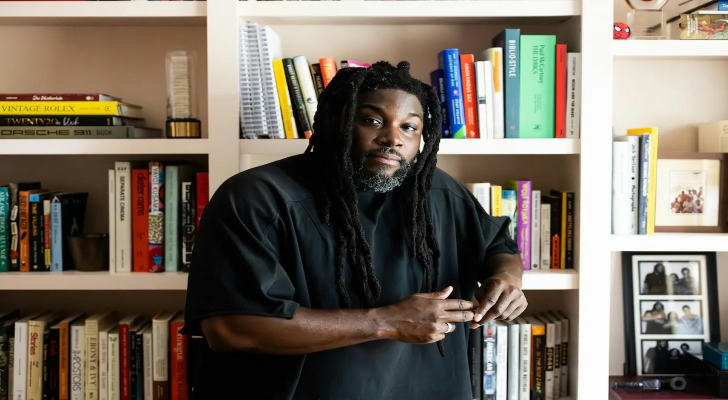The artistic sense behind the hairdressing industry: how to create your own style label
In the hairdressing industry, what really impresses people is often not the technology itself, but the "personal style" conveyed by the hairstyle. Hairstyle is not only a reflection of the external image, but also a comprehensive expression of inner emotions, aesthetic concepts and lifestyle. The artistic sense behind this style is the fundamental driving force for every hairdresser to pursue uniqueness.
This article will focus on "artistic sense" and analyze how to dig out your own aesthetic label in addition to technology, and use visual design, fashion trends and individual creativity to stand out in this highly competitive industry.

Ⅰ. Style label: Let the work speak for you
In many creative industries, "style label" is a well-known concept. Just like a painter has his iconic brushstrokes and a photographer has his unique way of composition, hairdressers can also create a distinctive visual language through styling design.
**What is a style label? ** In simple terms, when customers see a certain hairstyle, they can say: "This must be from your hand!" Whether it is known for soft lines or three-dimensional structure cutting, style labels can enhance your recognition among customers and the industry.
This recognition not only represents the professional level of the hairdresser, but also the "personal signature" left in the field of fashion culture.
Ⅱ. Aesthetic concept: Where does the sense of art come from?
- Multiculturalism and accumulation of aesthetics The United States is a country with a fusion of multiple cultures, and hairdressing styles are therefore diverse. Latin style, African braids, Korean bangs, American classic oily heads, etc., different ethnic groups and cultural backgrounds have brought rich aesthetic materials.
Hairdressers can continuously accumulate visual experience and cultivate their own aesthetic judgment through film and television dramas, street fashion, international fashion shows and other channels.
- Understanding individual characteristics Each customer's face shape, facial features, skin color, height, temperament and even occupation are important bases for hair design. A good hairdresser will incorporate these elements into the design to create a unique and suitable look.
For example, when serving a female office customer, it may be more suitable to create a low-key and elegant medium-length hair or a layered short hair; when designing a look for a freelance artist, you can consider adding more personalized colors and structures.
- Pay attention to details and overall sense The "artistic sense" of hairdressing is also reflected in the unity of detail processing and overall shape. Whether it is the curvature of the bangs, the lightness of the hair tail, or the transition effect of hair dyeing, they are all key components of the overall style.

Ⅲ. Five keys to create personal style
Positioning the theme style Find the direction you are good at, such as retro style, minimalist style, structural cutting, natural fluffy feeling, etc. Focus on polishing one or two styles to establish a stable customer perception.
Build a portfolio and social display Use your mobile phone to take pictures of customer looks, participate in hair photography activities, or design model hairstyles, and post these works on social platforms such as Instagram, Pinterest, TikTok, etc. Continuously outputting visual content will help to form a unique "sense of style".
Analyze customer feedback and peer reviews Pay attention to customers' comments on your looks. Which design do they like best? Which type of work has the highest click-through rate? At the same time, observe the works of your peers, draw inspiration, and constantly adjust your direction.
Participate in industry exchanges and competitions Participate in more local hair shows, hair salons or skill competitions, and accept professional advice from judges and mentors, which will help you improve your vision and push you to break through your "comfort zone".
Maintain creative passion Style is not achieved overnight. It needs to be continuously formed and polished through long-term practice and passionate investment. Record creative experience, sources of inspiration, and customer feedback, which can all be accumulated as your "style nutrients".
IV. Case story: Jason's retro art advancement

Jason was originally an ordinary hairdresser in a salon in a small town in California. At first, he tried various styles: popular Korean cuts, natural curls, modern short cuts, etc., but he could not form a distinctive feature. Customers could not remember him and the return rate was not high.
Until one time, he designed a classic 50s-style oil head for a rock music lover, which unexpectedly attracted a lot of attention and reposts. He was inspired and began to study the retro style of the mid-20th century in depth - including cutting lines, hair oil use, shaping methods and clothing matching.
He set up a "retro hairdresser" label for himself, published his works on social platforms, recorded the source of inspiration, and cooperated with local retro car shows to provide styling services. In less than a year, Jason's style label was deeply rooted in people's hearts, and customers had to make appointments two weeks in advance.
He created his own hairdressing world with artistic sense, and made hairdressing a way of creation and emotional expression in his life.
Ⅴ. Conclusion
In the hairdressing industry, technology is the foundation, but artistic sense and style are the key to making you remembered. A hairdresser with a personal style label can not only stabilize the customer base, but also stand out in the fierce competition and go further.
Don't be afraid to be yourself. From today on, start recording the thoughts and emotions behind each styling. You will find that the real art of hairdressing is not only about changing the appearance, but also a lifestyle that conveys attitude and aesthetics.
